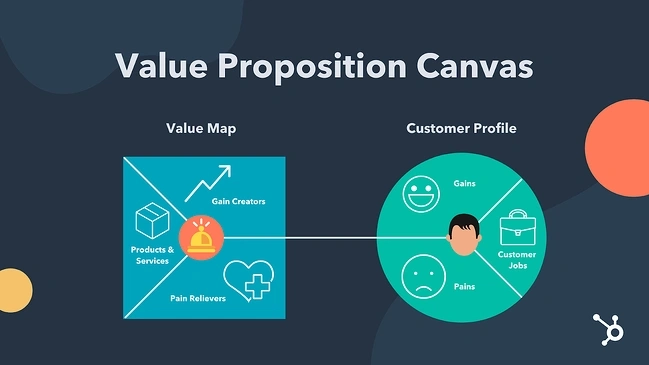Value Proposition Canvas
What is Value Proposition Canvas
Definition:
The Value Proposition Canvas is a strategic tool that helps businesses articulate and visualize the unique value their products or services offer to customers. In the context of technology, the Value Proposition Canvas focuses on identifying and aligning the features and benefits of a tech product with the specific needs and preferences of the target audience. It comprises two key elements: the Customer Profile and the Value Map.
Analogy:
Consider the Value Proposition Canvas as a blueprint for a tech product, much like architectural plans for a smart home. The Customer Profile outlines the residents’ preferences, habits, and challenges (similar to user personas), while the Value Map details how the home’s features, automation, and connectivity address those specific needs, creating an optimal living experience.
Further Description:
Customer Profile: This section delves into the characteristics, aspirations, and pain points of the target audience in the technology domain. It encompasses factors such as demographics, psychographics, and the jobs-to-be-done framework. Understanding the customer’s world is crucial for crafting a value proposition that resonates.
Value Map: The Value Map complements the Customer Profile by illustrating how the tech product’s features and functionalities directly address the identified customer needs. It breaks down the product or service into key components, highlighting how each element contributes to solving a particular problem or fulfilling a desire for the customer.
Why is the Value Proposition Canvas Important in Technology?
Alignment with Customer Needs: By explicitly mapping customer profiles and value propositions, businesses ensure that their tech solutions directly align with the unique requirements and preferences of their target audience.
Innovation and Differentiation: The Value Proposition Canvas encourages businesses to innovate by identifying gaps in the market and devising novel ways to address customer needs. This process helps differentiate the tech product from competitors.
Optimized Resource Allocation: Understanding the precise value a product brings to customers enables efficient resource allocation. Businesses can focus on enhancing features that truly matter to customers, optimizing development efforts.
Market Validation: The Value Proposition Canvas serves as a tool for market validation, ensuring that the proposed value resonates with the intended audience. It helps businesses refine their offerings based on real customer feedback.
Examples and Usage:
Smart Home Automation System: Customer Profile might include tech-savvy homeowners concerned about energy efficiency. The Value Map showcases features like automated climate control, smart lighting, and energy consumption monitoring to address these concerns.
Enterprise Software Solution: For a B2B software, the Customer Profile could involve IT professionals in large corporations. The Value Map would outline features like seamless integration, robust security protocols, and scalability, catering to the complex needs of enterprise clients.
Key Takeaways:
- The Value Proposition Canvas is a strategic tool for aligning technology products with customer needs.
- It comprises the Customer Profile, detailing the target audience, and the Value Map, illustrating how the product addresses customer needs.
- Importance lies in ensuring alignment, fostering innovation, optimizing resources, and validating market fit.
- Examples in technology range from smart home solutions to enterprise software, showcasing the versatility of the Value Proposition Canvas.
Table of Contents





